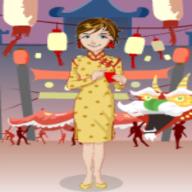2. ‘’If you shine green light on a red or blue object, the object absorbs green light and reflects no light. Thus a red or blue object appears black in green light.’’ Red object唔係absorb red light ga meh? Blueobject唔係absorb blue light ga meh?
3. The electromagnetic spectrum ge frequency--low同high分別代表d咩?
4. ‘’A convex lens can produce images different in size from the objects.’’ 點解會一時produce大image,一時produce細ge?
更新1:
Q2: 聽人講話著黑色衫會熱d,係咪因為黑色ge野會吸曬全部光? 仲有如果曬緣光落植物上,係咪會reflect曬,而做唔到photosynthesis? Q3:radio waves係low frequency while gamma rays 係high frequency,咁有咩分別?係咪危險d? Q4請問咩係principal axis? 咁concave lens係咪只會produce smaller images ga? Thanks a million ar ^^
更新2:
唔好意思,仲有我試過用放大鏡去睇遠ge野,image係細左,但係點解會倒轉左ge,係咪我個放大鏡有問題??

